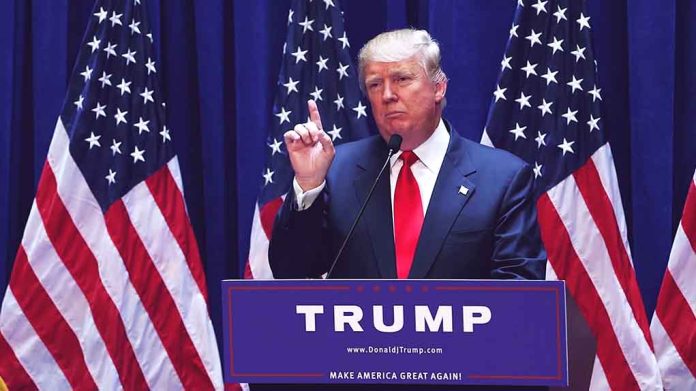
The escalating legal battle over Trump’s employee buyout proposal strikes at the core of presidential authority and federal workforce rights.
Key Takeaways
- Federal judge extends block on Trump’s employee buyout proposal, affecting over 2 million federal workers.
- The Administration aims to reduce federal spending by offering buyouts, sparking executive power debates.
- Union lawsuits claim the buyouts are illegal, potentially impacting government expertise.
- The decision has caused significant controversy regarding constitutional authority and legal thresholds.
The Legal Impasse
A federal judge in Boston extended a block on the Trump administration’s buyout proposal aimed at over 2 million federal employees. U.S. District Judge George O’Toole issued a temporary restraining order, citing the need to address legal concerns. The decision halts the administration’s attempt to streamline the workforce to save costs.
This buyout initiative, led by the Department of Government Efficiency, overlooks potential legal burdens, critics argue. Approximately 65,000 federal workers have already signed up for the buyout, highlighting large-scale acceptance amidst controversy.
Implications of Executive Decisions
The administration has extended the proposal deadline due to judicial rulings. Attorney Eric Hamilton describes this as a “humane off-ramp” to ease transitions under revised working conditions.
However, labor unions including the American Federation of Government Employees have voiced opposition, describing the terms as arbitrary, potentially politicizing job vacancies and diminishing expertise in critical government functions.
Judicial and Political Reactions
The extension follows a strong legal challenge from groups like Democracy Forward, marking a significant push against administrative execution without Congressional oversight.
“I think that Trump is on very solid ground with the buyout. I’m still a bit baffled by what the court is doing here. If the presidents are allowed to dictate conditions of employees coming into the office, what they’re working on, all of that is part of Article II powers of the president controlling the executive branch. I’m not, even today, certain what the constitutional problem is. You’ve got 65,000 employees who were told, look, we’ll let you stay at home and look for a job as long as you agree to resign and to give a number of months. They’ve agreed to it, the government’s agreed to it. That seems to me to be perfectly within the wheelhouse of the president. So I think he’s going to win on that,” said Jonathan Turley, constitutional law attorney and Fox News contributor.
This debate highlights the complex balance between presidential administrative authority and employee legal rights. With significant implications for government operation and expertise, the battle is far from over. Whether the administration’s strategy can stand judicial scrutiny will define the landscape of federal workforce management and executive reach.





